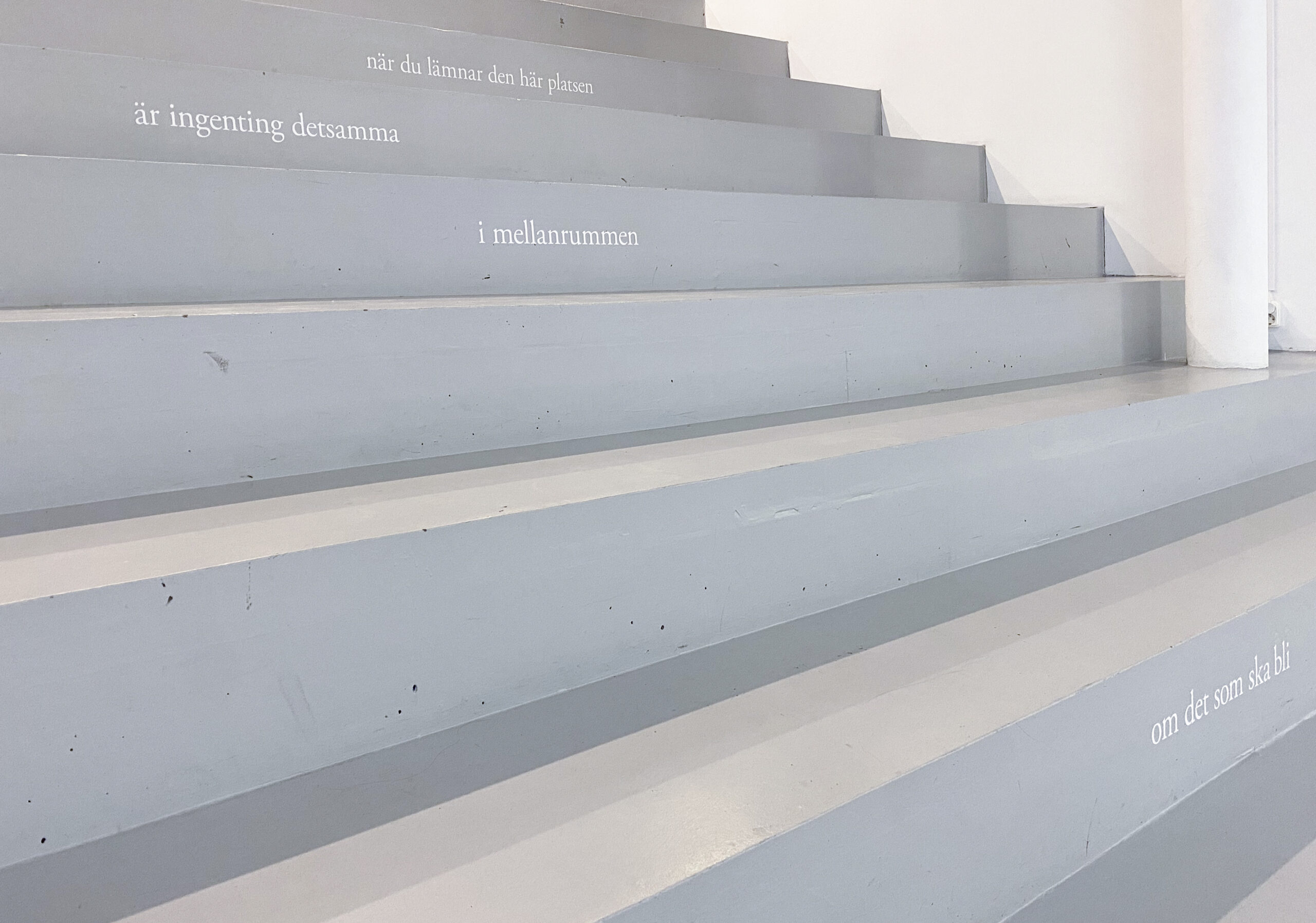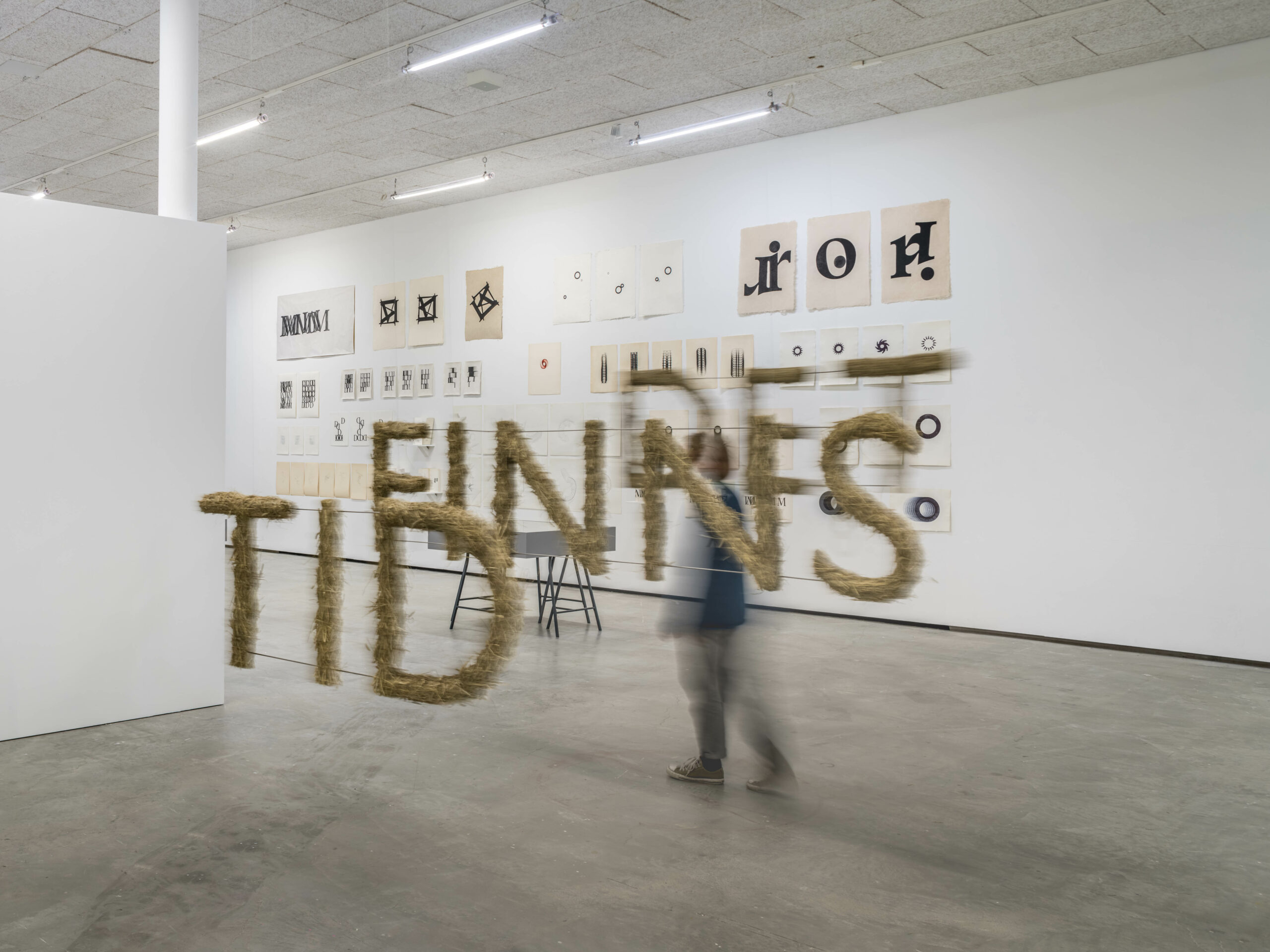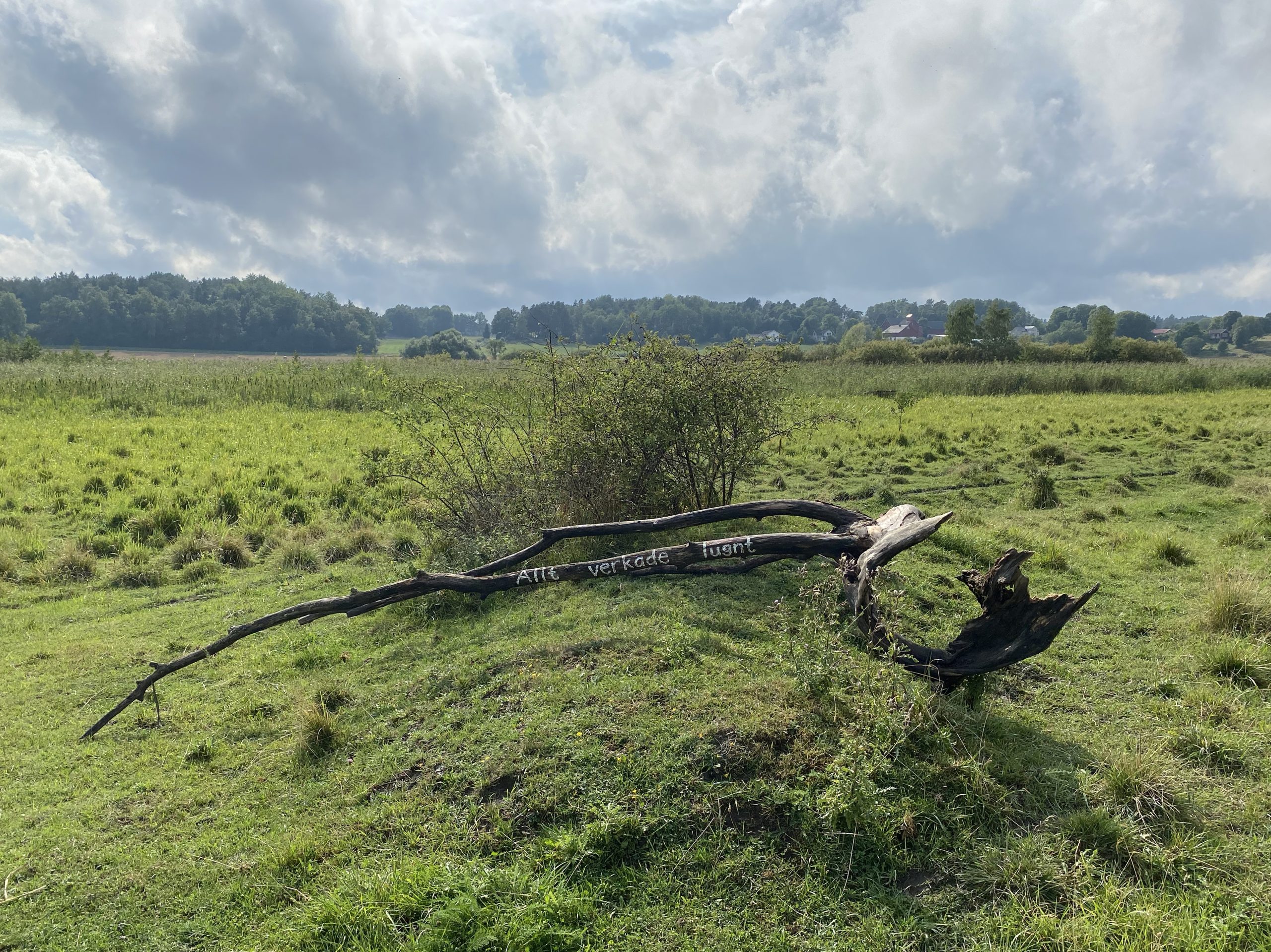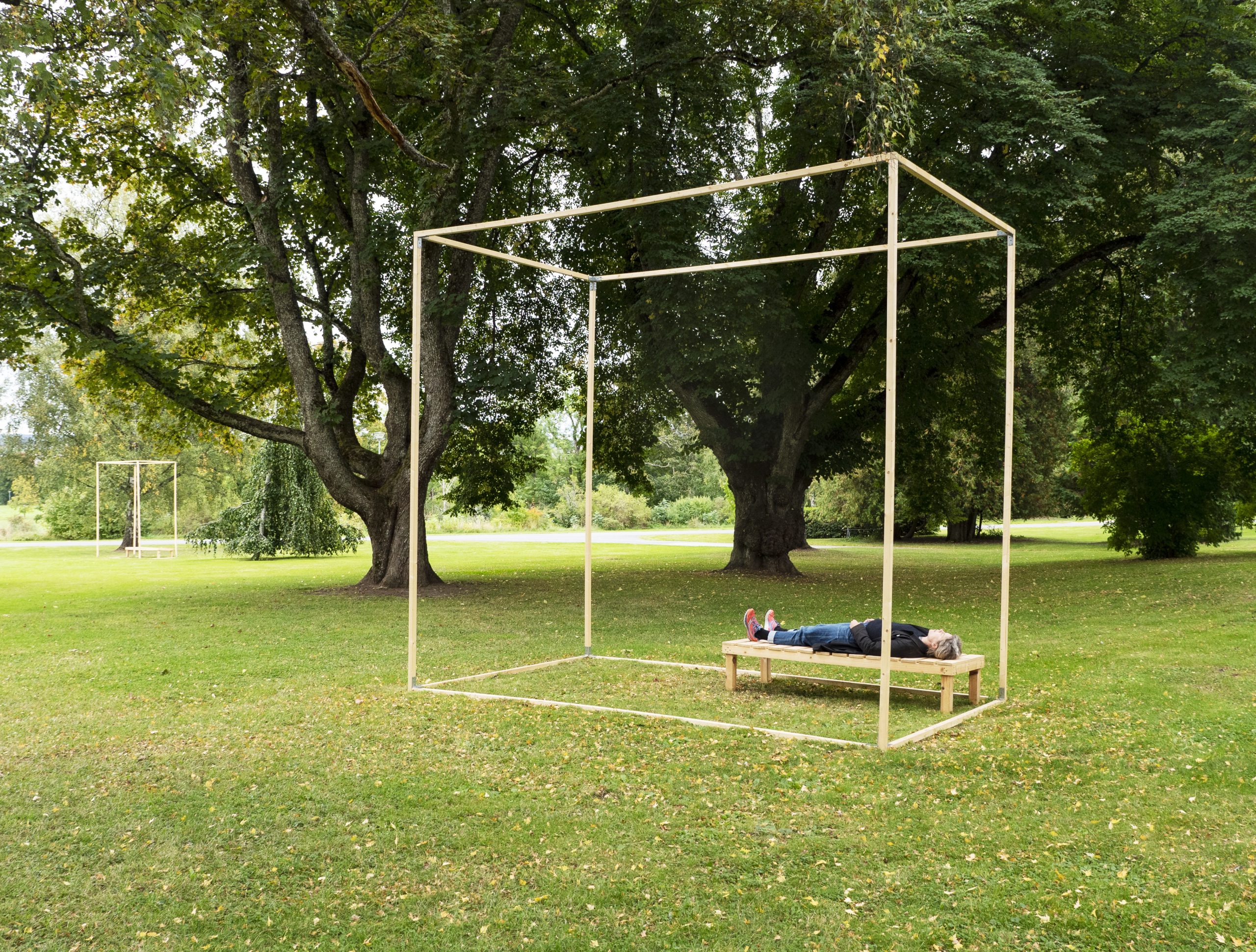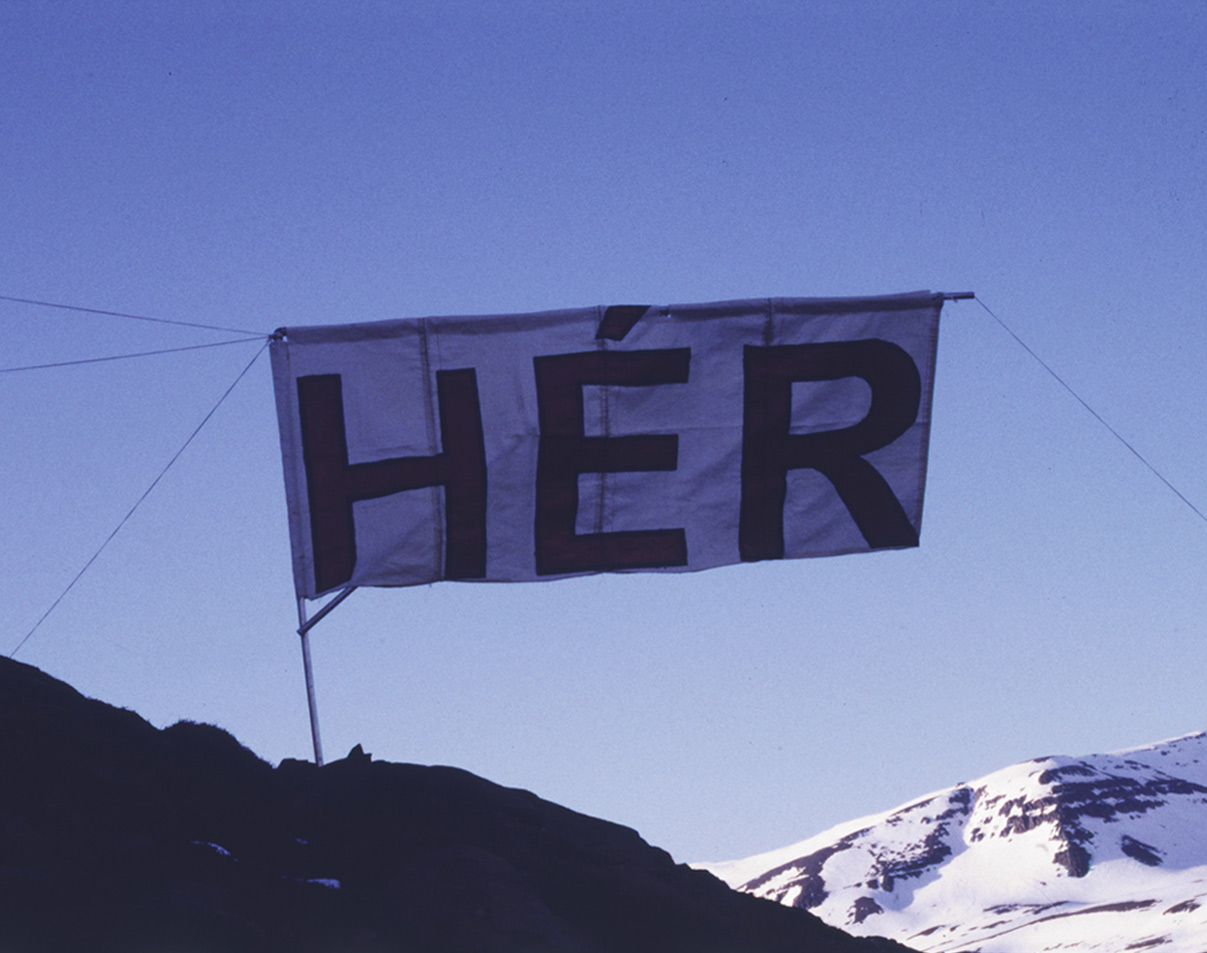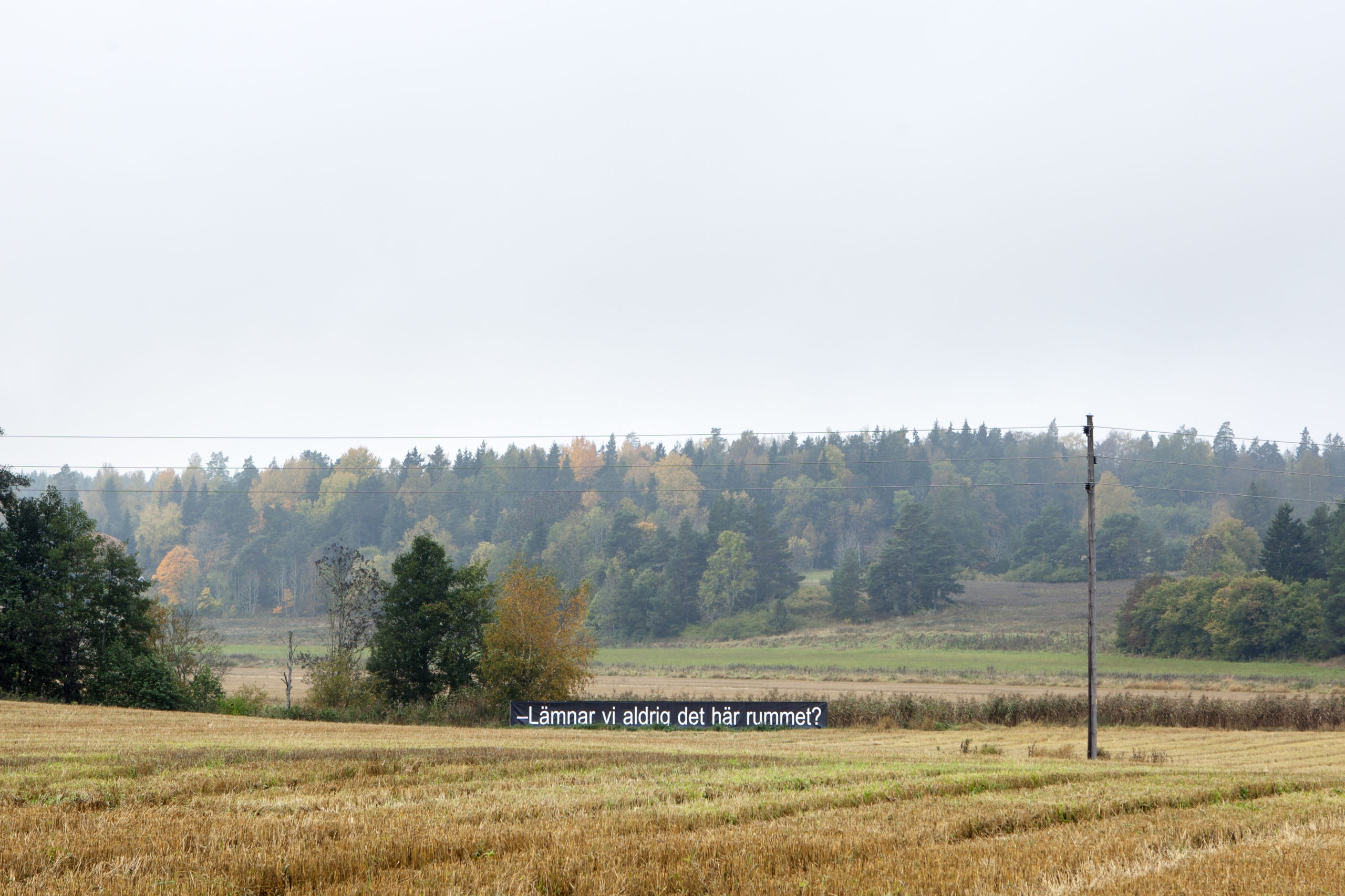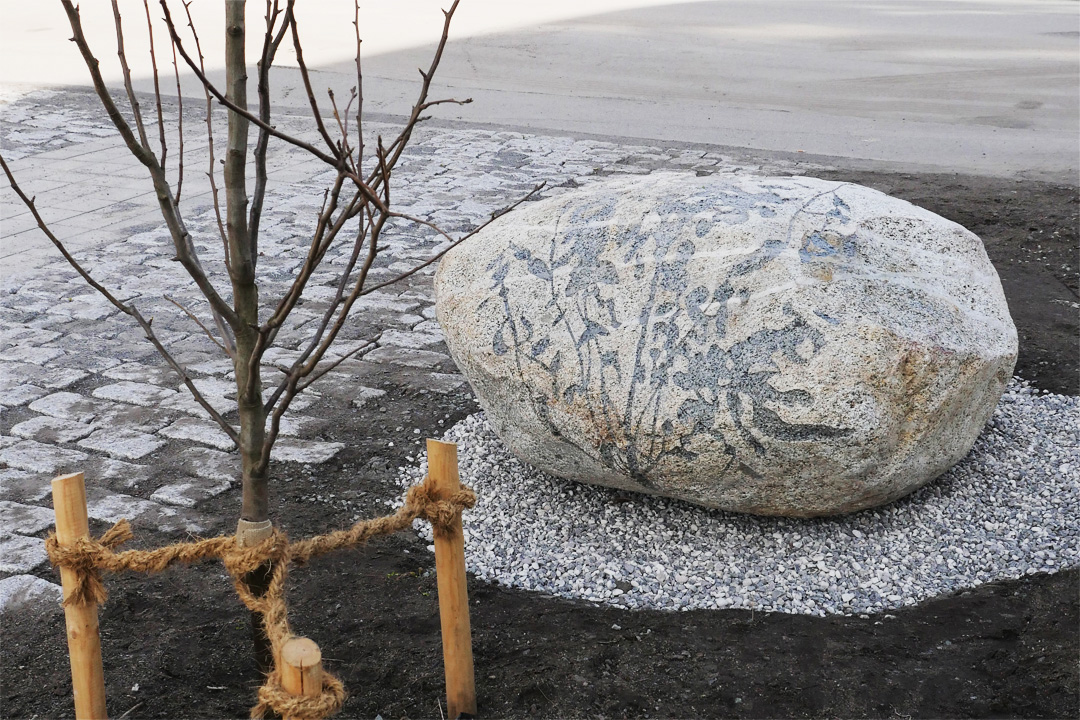Site-specific installation created for the group exhibition herein between spaces at Marabouparken Art Hall. The landings of the stairs create line breaks in the text. The spaces in the text allow it to be read in multiple ways.
Work Type: Installation
There Is Time
Installation for Marabouparken Art Hall consisting in the words THERE, IS and TIME hung separately. The overlapping of the words breaks up the reading order. The lightweight construction easily put the words in a slight oscillation.
Everything Seemed Calm
A temporary installation made in relation to the site and to the concept of watching through binoculars. Part of the outdoor group show Art Viewing in the bird watching area of Hammarskog outside Uppsala. Participating artists: Anna Einarsson, Anna-Karin Brus, Jessica Faiss, Leo Correia de Verdier, My Lindh and Sofie Proos. Curators: Anna Einarsson and Jessica Faiss
Air Space
Site-specific temporary installation in Uppsala Hospital Park, part of the exhibition Horizon of the Hospital, 2021
Uppsala hospital now houses a studio association but was built as a psychiatric hospital that opened in 1885. Air Space consisted in three different air spaces with benches, placed in the park outside Uppsala Hospital. The dimensions of the spaces corresponded to the cubic meters of air calculated for the different patient categories at the Hospital: 39.5 m3 for first-class patients, 19.8 m3 for calm patients and 16.7 m3 for “anxious and untidy”. The ceiling height is 3.8 m in all three air spaces, corresponded to that in the Hospital building. The visitor could lie down on the bench, feel the space and look up at the sky.
Here
The installation was carried out in the village of Seidisfjördur on the icelandic east coast. The installation consisted a flag provided with the text HÉR (HERE in icelandic). The flag was placed half-way up on the mountain situated opposite the gallery. In the gallery a strong telescope was aimed at the flag. Looking through the telescope one could read the text on the flag. Without a telescope the flag was invisible.
Tågteve (installation)
The large scale installation Tågteve (Train TV) was displayed along the railway between Stockholm and Uppsala (Sweden) in the summer of 2012. Via 28 large subtitle signs, the passenger was able to follow a dialogue about travelling and reality as a film.
The installation was made possible with kind support from Konstfrämjandet, Knivsta municipality, Kulturbryggan, Uppsala municipality and Uppsala County.
Pictured sentences:
– Will we never leave this place?
– Nah.
– What do you mean?
– This is how it continues.
In 2016 Tågteve was published as a book on Jon Brunberg Publishing with design by Sandra Praun and texts by Marianna Garin, Khashayar Naderehvandi and Monica Sand.
Tågteve is also a video work (7.52 min) that has been shown at Bonniers Art Hall and Gallery Off-Konsten in Uppsala in connection with the release of the Tågteve book and at Studio 44 Animation and Video Screening Program.
Camera: Carl Dieker
Distribution: Filmform – The Art Film & Video Archive
The Sun Mountain
The Sun Mountain is a commissioned work for Solberga outside of Stockholm. The commission came about after my work with the public commission Time to stay which was made in the same area. The Sun Mountain consists in a big stone and a pear-tree. The shadow of the pear-tree has been sandblasted into the surface of the stone. The stone was found and saved when new houses in the area of Solberga were built.
Commissioner: Konstnärscentrum öst
Art consultant: Birgitta Silfverhielm
I Moved in the Direction of the Text
Nine site-specific sentences have been sandblasted into the built environment at various locations in the residential area Vallastaden, Linköping. The sentences address people moving in the area, while walking on the sidewalk, crossing a corner or looking over a railing. The main character in the texts is the reader themselves in relation to their own posture, the surrounding nature and the bypassing moment.
Pictured sentences:
my curiosity | around the next corner | led me further
I moved closer to the maple | in the direction of the text | towards City Gross | Kaliningrad | Damascus
there | against the wall | I had to bend down | to read on
I could have stepped on them | but read the words | neck facing the sky
if the light were to fall against the letters | my shadow on the ground | underneath would be darkness, roots, earth
Commissioned by the municipality of Linköping for Vallastaden
Art consultant: Åsa-Viktoria Wihlborg for ArtPlatform
Special thanks to: Khashayar Naderehvandi and Rikard Heberling
